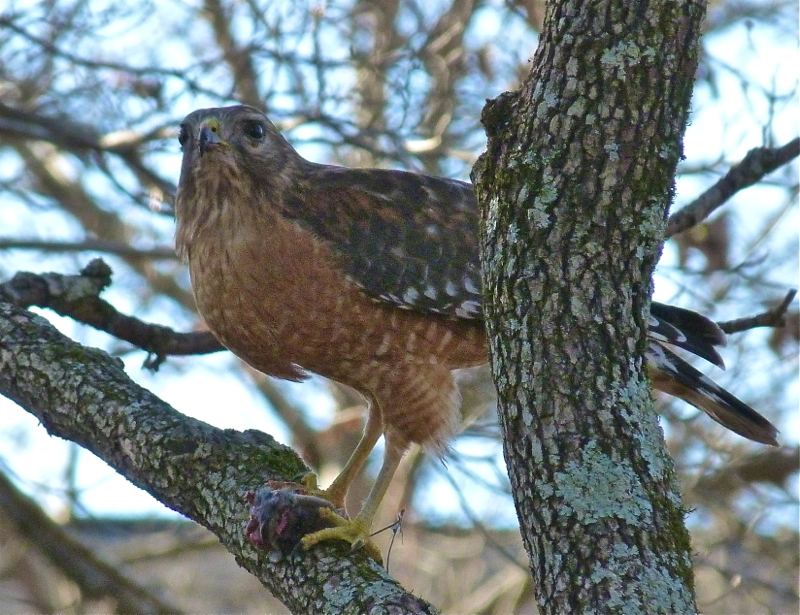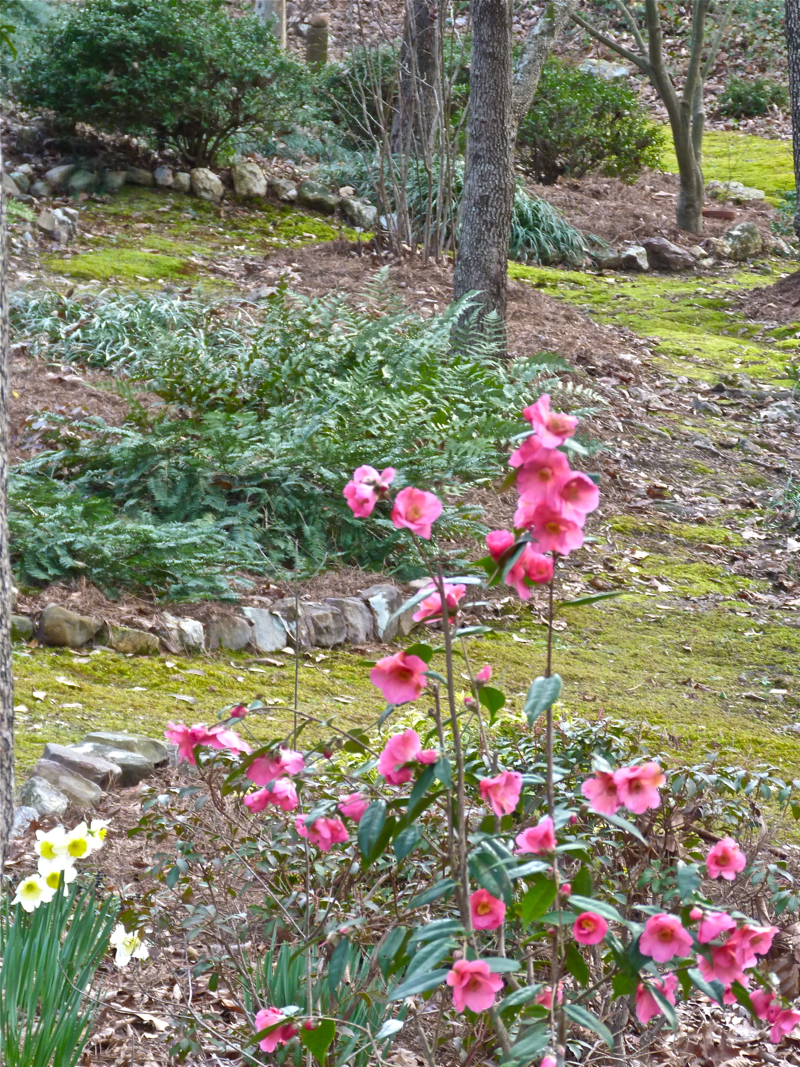Goodbye January, Hello Spring!
 Tuesday, January 31, 2012 at 9:10PM
Tuesday, January 31, 2012 at 9:10PM Today is why I garden.
I was in the garden, digging up baby forsythias around the edge of a shrub where tips of branches had touched the earth and rooted to produce new growth. The earth was very damp and easy to dig. Most of the diggings would go to the brush heap, but a few would go to a friend. Once every few years I prune my forsythias and dig up unwanted shoots to keep the shrubs within their boundaries. I was late to do this. Already the forsythias are beginning to bloom!
It was a perfect day with crisp air warmed by sunshine. Birds, squirrels, and other animals were frisky, and so was I. I looked up when I heard the familiar shrill call of a Coopers Hawk. I followed his flight and watched him land above me on the branch of an oak tree. I grinned. He had settled within inches of another Cooper's Hawk. I knew there were two of them, but I had never before seen them together. I think they must be making plans for nest and family.
I know I have already published several photos of my Red-shouldered Hawk, but here's one more. Don't look too close if you are squeamish! 
Most of January was dreadfully dreary and very wet, but finally we have had some beautiful days, still frosty at night but with daytime temperatures warming up into the 60s. I know it's too early for all these flower buds, and there will certainly yet be a killing freeze. But I have decided to enjoy them while they are here. Goodbye January, hello, spring!
So, here are some blooms in my garden on this, the last day of January:
A view of the camellia 'Red Candles' in the woodlands. It is still a small, scrawny shrub, but it is loaded with blooms:
Some more camellia shots:Top photo is of 'Something Beautiful'. Middle photos are of an old camellia that was here when we arrived in 1985. Lower photos are of 'Red Candles'.
Daffodils:
Quince:
Here's another look at the woodland garden, taken a few days ago. Everything is wet!
Water droplets cling to a native red cedar in the woodland garden:
Another view in the woodland garden, looking over the blue bridge. The moss path is lush after all the January rain:
Gardening is about passalong plants and friendship, about lush blooms and feel-good foliage, about weather and work and wildlife and walks to think about and enjoy it all. It's often a solitary endeavor, but the results are most satisfying when they are shared. I hope you have enjoyed a peek at my early spring; and if it freezes over, I'll tell you about that, too!
 Permalink
Permalink